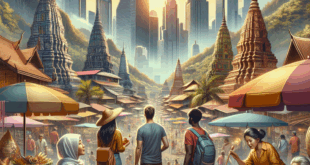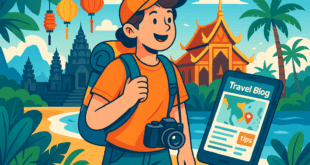Indochina, a historical and geographic region of Southeast Asia, offers one of the most fascinating blends of cultures, landscapes, and histories on the planet. Comprising Vietnam, Laos, and Cambodia—and sometimes extending to include Thailand and Myanmar—Indochina sits at the intersection of ancient empires, colonial legacies, and modern transformations.
This region earned its name from its location between India and China, two of Asia’s largest and oldest civilizations. As such, Indochina reflects a remarkable fusion of Indian spirituality, Chinese philosophy, French colonial influence, and native traditions. Today, it’s a popular destination for travelers seeking depth, diversity, and authenticity.
Historical Significance
Indochina’s past is marked by the rise and fall of powerful kingdoms. From the Khmer Empire that built Angkor Wat to the ancient Vietnamese dynasties that resisted foreign domination, the region has a long legacy of resilience and innovation.
The colonial period—particularly under French rule—left a lasting mark on architecture, education, cuisine, and urban planning. Cities like Hanoi, Phnom Penh, and Vientiane still carry traces of colonial design, seen in their wide boulevards, villas, and baguette-filled bakeries.
After the fall of colonialism, the region endured intense conflict, especially during the Indochina Wars, which include the First Indochina War and the Vietnam War. These events not only shaped the political landscape but also influenced global geopolitics during the Cold War era.
Cultural Diversity and Religion
Despite geographic proximity, each country in Indochina has a distinct cultural identity. Vietnam is known for its Confucian heritage, Buddhist temples, and a fast-growing modern economy. Laos, more laid-back and landlocked, is dotted with golden stupas and serene monasteries. Cambodia, once the heart of the Khmer Empire, continues to awe visitors with the grandeur of Angkor and its deep-rooted Buddhist traditions.
Religiously, Theravāda Buddhism is most dominant in Cambodia and Laos, while Vietnam blends Mahāyāna Buddhism, Taoism, Confucianism, and indigenous beliefs. Animism and ancestral worship remain influential in rural communities.
Natural Beauty and Eco-Tourism
Indochina is blessed with stunning geography—from the terraced mountains of northern Vietnam to the jungles of Laos and the tropical beaches of southern Cambodia. The Mekong River, which flows through all three core countries, plays a vital role in agriculture, transport, and cultural identity.
Eco-tourism has grown significantly, with visitors drawn to activities like trekking in Sapa, kayaking through Ha Long Bay, or exploring the biodiversity of Laos’ Bolaven Plateau. Responsible tourism is increasingly promoted to preserve fragile ecosystems and respect local traditions.
Cuisine and Daily Life
Food in Indochina is vibrant, flavorful, and often street-based. Vietnam’s pho, Laos’ laap, and Cambodia’s amok are just a few iconic dishes. Meals are often communal, using fresh herbs, rice, fish sauce, and tropical ingredients. French influence is also visible in baguettes, pâtés, and coffee culture.
Daily life in Indochina is a dynamic blend of old and new—monks with smartphones, rice paddies alongside motorbike highways, and traditional markets coexisting with modern malls. Football is widely loved, and many locals engage with international sports content, including betting platforms like apuestas de fútbol, showing how globalization touches even the most traditional corners of society.
Comparison Table: Vietnam, Laos, and Cambodia
| Category | Vietnam | Laos | Cambodia |
|---|---|---|---|
| Population (approx.) | 99 million | 7.5 million | 17 million |
| Main Religion | Mahāyāna Buddhism + folk beliefs | Theravāda Buddhism | Theravāda Buddhism |
| Colonial Past | French Indochina | French Indochina | French Indochina |
| Top Attraction | Ha Long Bay | Luang Prabang | Angkor Wat |
| Economic Focus | Manufacturing, tech, tourism | Agriculture, eco-tourism | Textiles, tourism |
Conclusion
Indochina is more than a geographic label—it’s a living testament to cultural exchange, historical depth, and the human spirit’s resilience. Whether you’re exploring ancient temples, cruising along the Mekong, or sharing a bowl of noodles with locals, this region offers an unforgettable journey through time, taste, and tradition.
As tourism increases and economies evolve, the challenge will be preserving what makes Indochina unique while embracing the opportunities of a connected world. For those seeking authenticity, diversity, and discovery, Indochina is waiting.
 Indochina travel guides All travel guides of Vietnam, Cambodia, Laos, Thailand, Myanmar.
Indochina travel guides All travel guides of Vietnam, Cambodia, Laos, Thailand, Myanmar.



